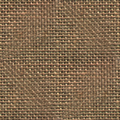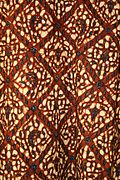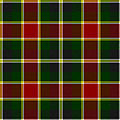- Moquette
-
Moquette is type of fabric with a thick, dense pile. It is a particularly versatile and hard-wearing material, predominantly wool with a small percentage of polyester. Moquette is renowned for its attractive, hard-wearing, durable, and fire-resistant qualities,[1] hence it is commonly used for carpeting and upholstery.
Contents
Origin
Moquette originated in France, where it was woven by hand. The standard width was a Flemish ell of 27 inches. There were two finishes: moquette velouté, which had a cut pile like English Wilton, and moquette bouclé, which had an uncut pile like Brussels carpet.[2] It is still woven in Yorkshire using traditional techniques.
Examples
The most famous moquette in the USA is the one sent by Louis XVI to George Washington. It was made for the banquet room in Mount Vernon, where it can still be seen.[2]
Moquette is also famous for being used on London Transport's vehicles, particularly the seats of London Underground's Tube trains. During the decades of the Rail and the many Rail companies, there were some 10 moquette manufacturers in the UK. As a result of the nationalisation of the railways after the Second World War and then the Beeching cuts of the early 1960s, the number of available customers plummeted. By the mid 1960s, there were just two suppliers, one of which was Courtaulds.
See also
- Mockado
- Carpet
- Fabric
- Upholstery
- Weaving
References
- ^ W. A. Gibson-Martin (1932). Ship-furnishing and Decoration. p. 71. http://books.google.com/books?id=4vogAAAAMAAJ&pgis=1.
- ^ a b Mildred Jackson O'Brien (2005). The Rug and Carpet Book. p. 54. ISBN 1419151851. http://books.google.com/books?id=g3Kc6yw-OTEC.
Categories:- Woven fabrics
- Textile stubs
Wikimedia Foundation. 2010.



